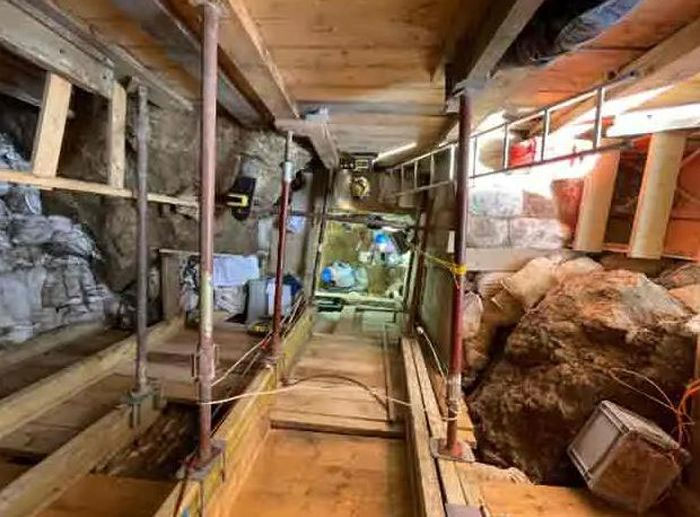The skeletons in the Ilsenhöhle cave in Germany are evidence of an important period in the history of human migration and evolution.
According to two articles published in the journals Nature and Nature Encology & Evolution , the Ilsenhöhle cave remains belong to the descendants of the first humans – still “purebred” Homo sapiens – who crossed the Alps to explore the region. new land, where their descendants met the ancient Neanderthals.
The work was carried out by a multinational group of authors from the French University in Paris, the Max Planck Institute for Evolutionary Anthropology (Germany) and a number of other institutes and schools.
 Excavation scene of ancient human remains in Ilsenhöhle cave – (Photo: NATURE).
Excavation scene of ancient human remains in Ilsenhöhle cave – (Photo: NATURE).
Neanderthals are species in the same genus Homo (genus Human) as us Homo sapiens, which disappeared from Europe about 40,000 years ago.
However, there is growing evidence that intermarriages have arisen between the two species, leaving most of us today as hybrid humans.
A large portion of today’s population has about 2% Neanderthal DNA in their bodies, not to mention small portions of DNA from other human species as well.
For that to happen, Homo sapiens and Neanderthals needed to meet and live together for a period before harsh evolutionary history wiped out these different species brothers.
It is hypothesized that the encounters occurred after Homo sapiens crossed the Alps about 45,000 years ago. Among them, many separate groups of people with many unique cultures have spread widely throughout Europe today.
The group whose remains were found in the Ilsenhöhle cave belonged to tribes that occupied Eastern and Central Germany, near the village of Rains in the present-day state of Thuringia.
Their tool-making culture was also the dominant culture in parts of Paleolithic Europe, related to both Homo sapiens and Neanderthals, and is also evidence that these two species have close communication with each other.
Archaeological evidence also shows that our immediate ancestors built a settlement compact enough for them to withstand cold weather during this period, an advantage that helped them survive long periods of time. Neanderthals became extinct again.
Horse teeth in Ilsenhöhle cave show that they even kept horses in the cave with them during the cold, deep freeze periods that have been recorded in the sediments.
Compared to other groups, this group of humans interbred less with Neanderthals, perhaps because harsh weather and competition for survival limited mating opportunities.
But that gives them a more pristine genome, helping us better understand the genetic makeup of the first humans to cross the Alps, comparing them with the distinctly hybrid humans found in some regions. others, thereby completing the complex picture of human evolution.





